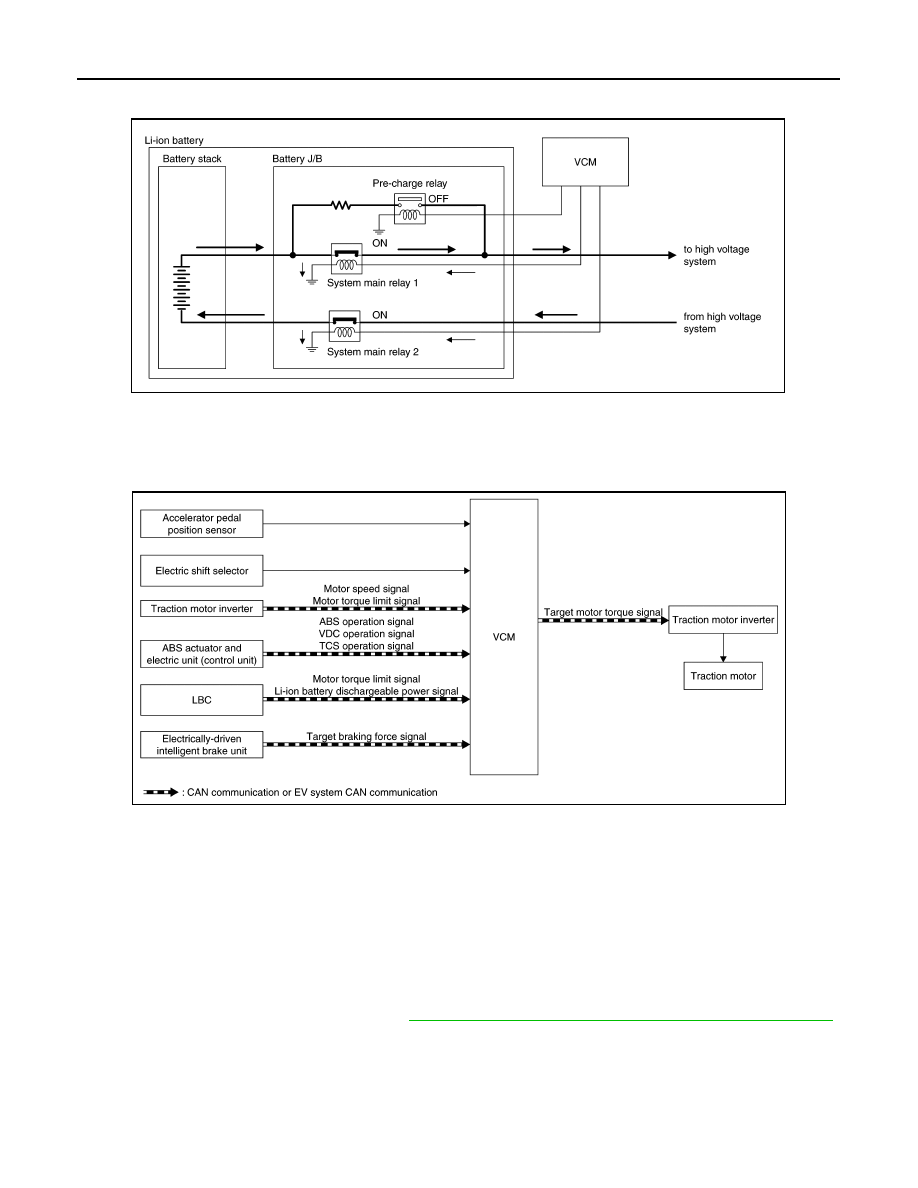Nissan Leaf. Manual - part 506

EVC-48
< SYSTEM DESCRIPTION >
SYSTEM
the signal, VCM activates the system main relay 1 and deactivates the pre-charge relay. Then, normal power
is supplied to the respective systems.
MOTOR POWER CONTROL
MOTOR POWER CONTROL : System Description
INFOID:0000000010120557
SYSTEM DIAGRAM
NOTE:
VCM calculates vehicle speed, based on a motor speed.
DESCRIPTION
The EV system generates traction force by converting the direct current from the Li-ion battery to an alternat-
ing current by the traction motor inverter and operating the traction motor with the alternating current.
VCM calculates target traction force, based on an accelerator pedal position, vehicle speed, and shift position.
After this, VCM adds creep force to the calculated target traction force.
Subsequently, VCM adds torque limitations to the calculated driving force, based on torque down signals
received from each system, to decide a motor torque request signal.
This motor torque request signal is transmitted to the traction motor inverter via EV system CAN communica-
tion.
For the operation principle of the motor, refer to
TMS-19, "MOTOR POWER CONTROL : Operating Principle"
.
OUTPUT LIMIT AND OUTPUT STOP REQUEST LIST
JSCIA0493GB
JSCIA0778GB